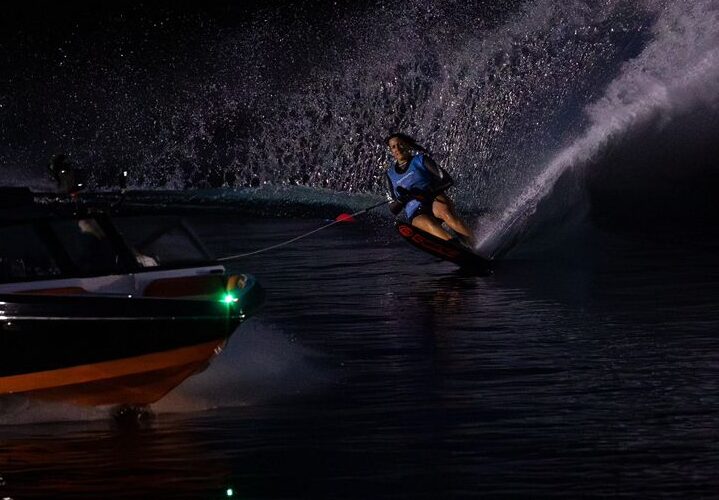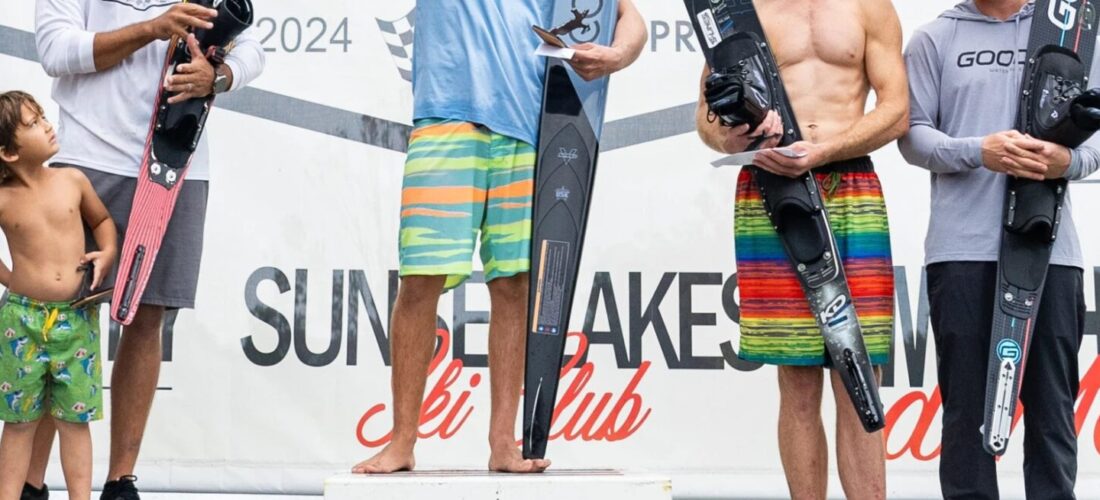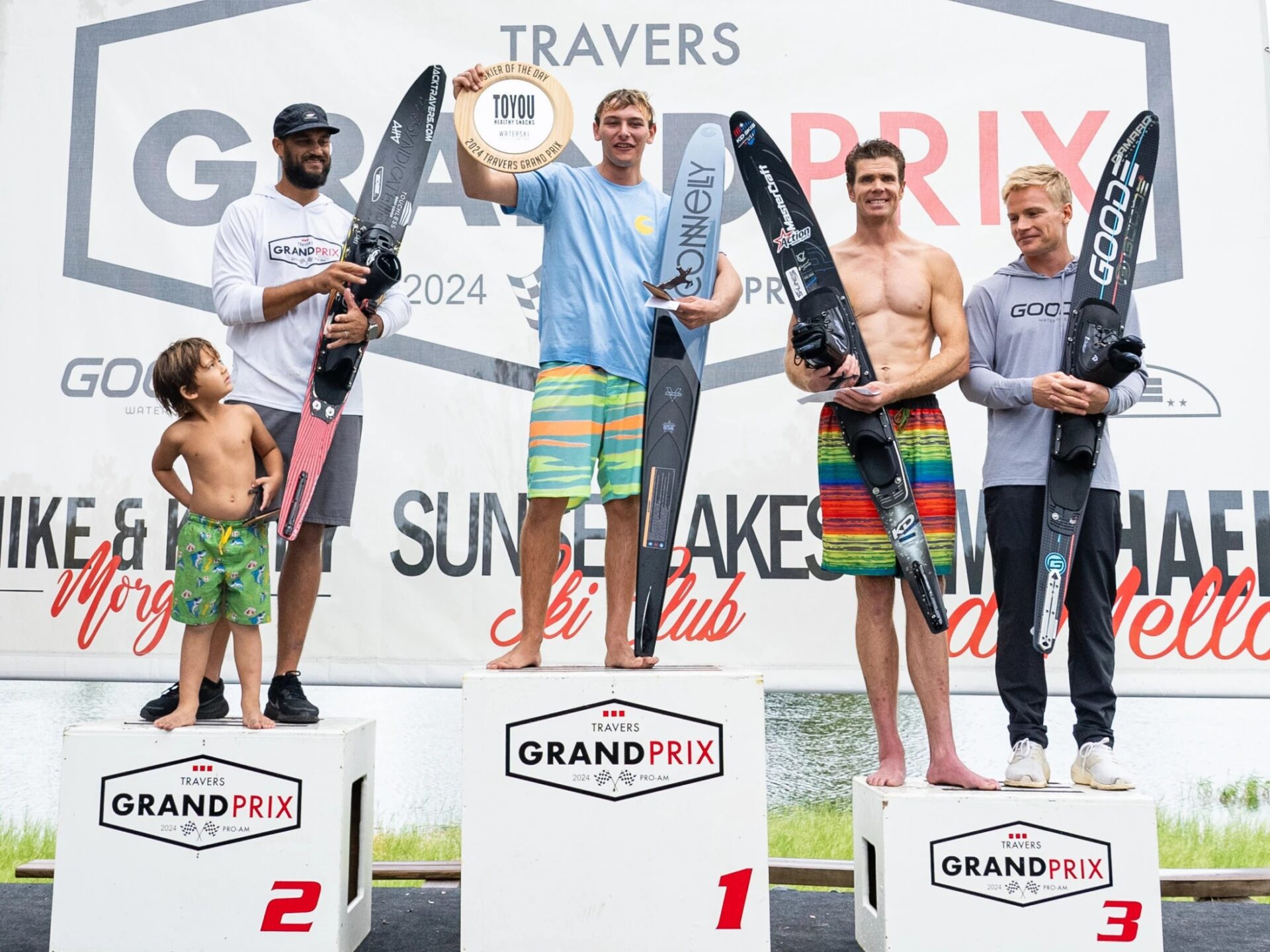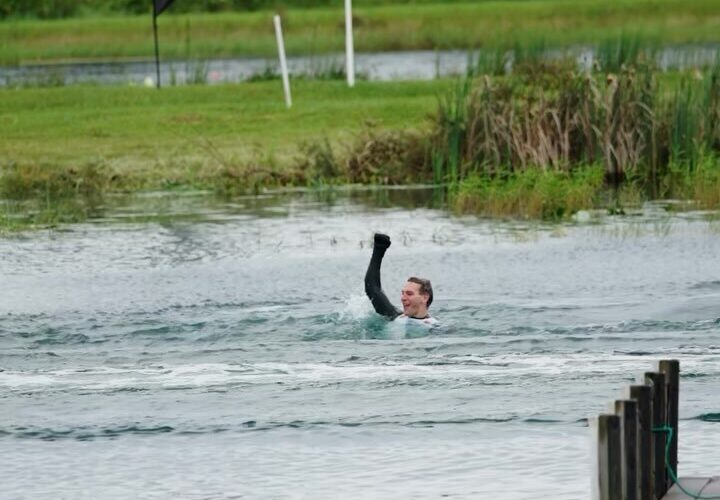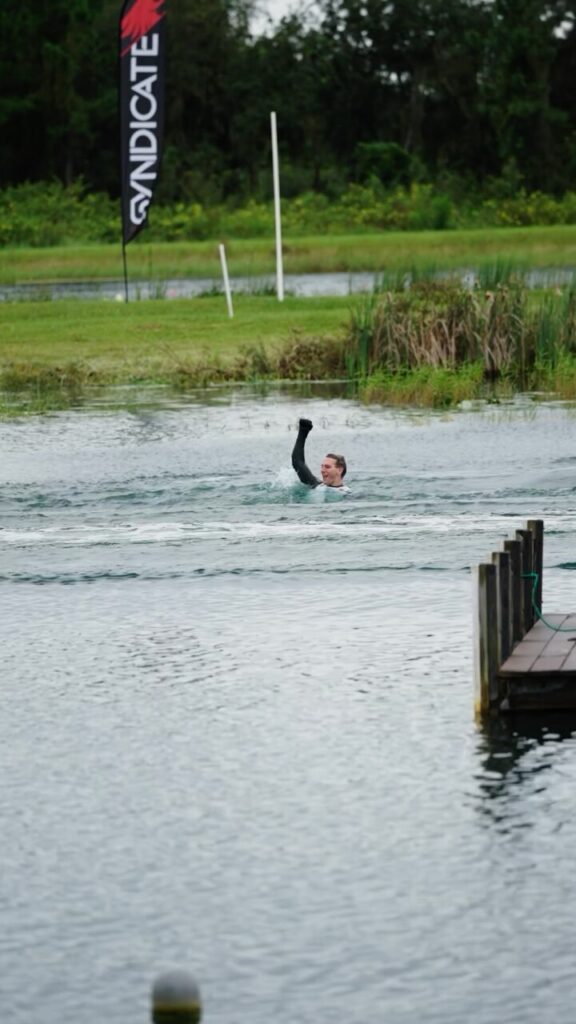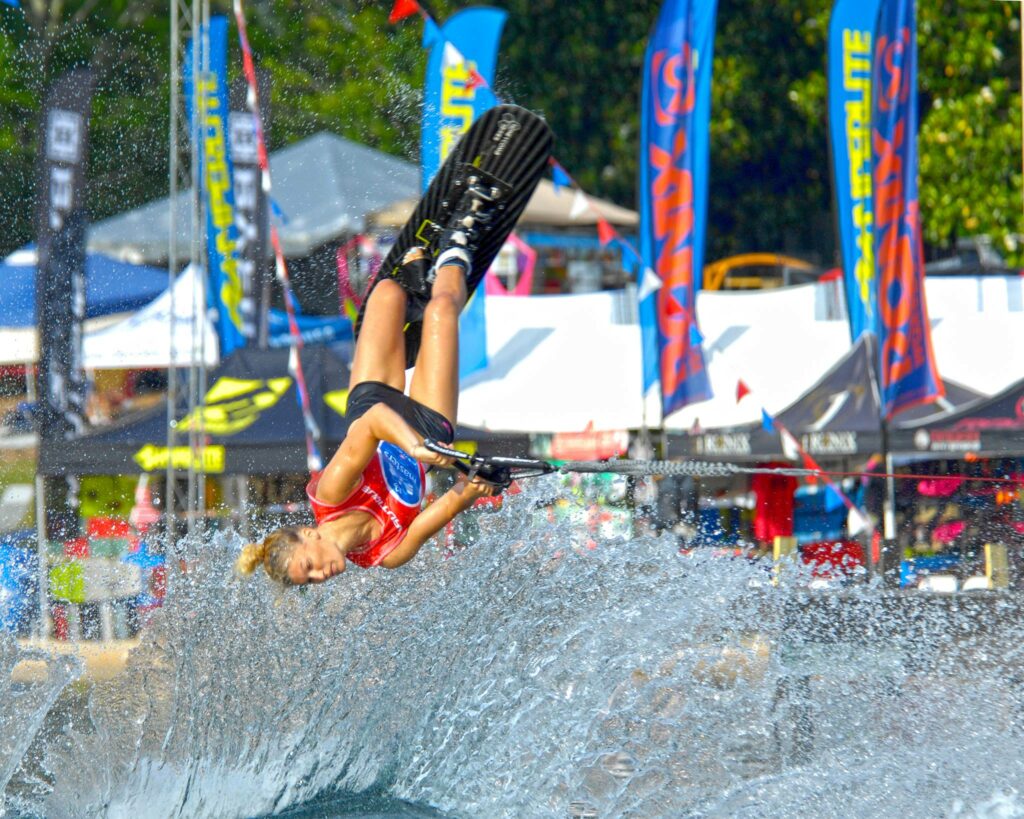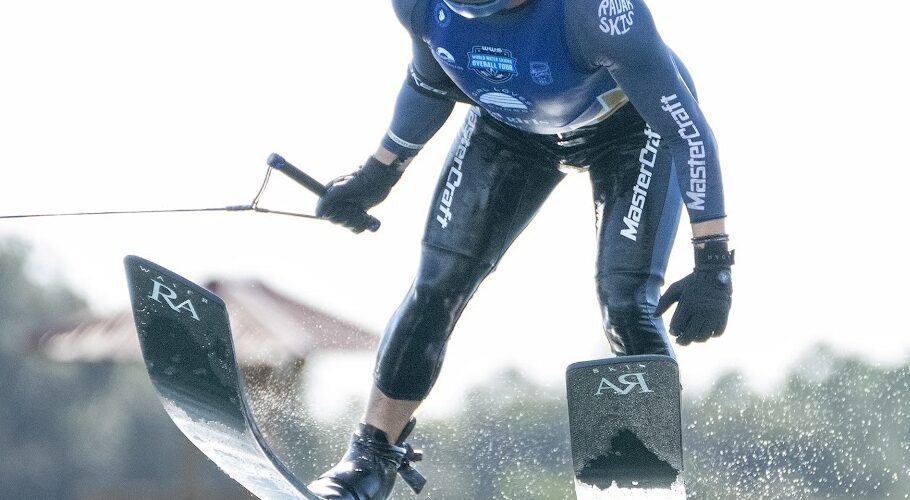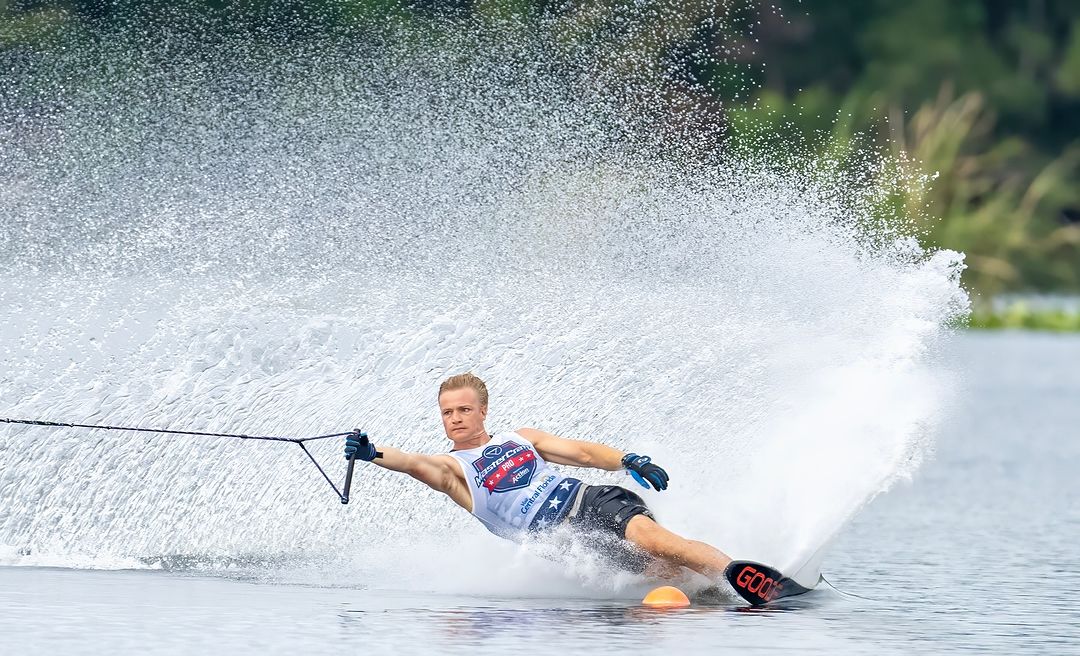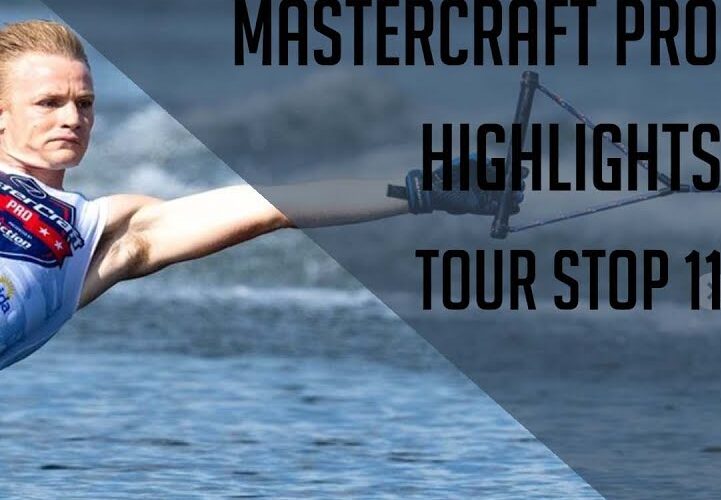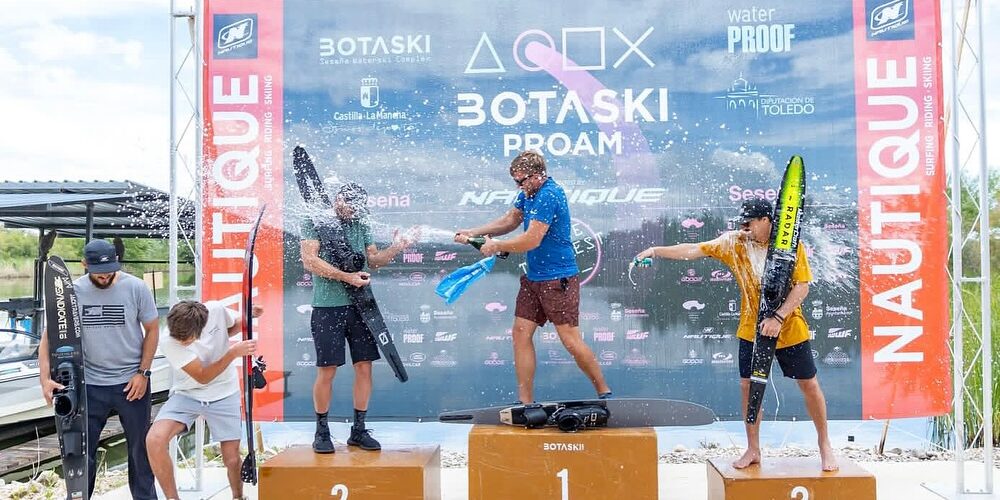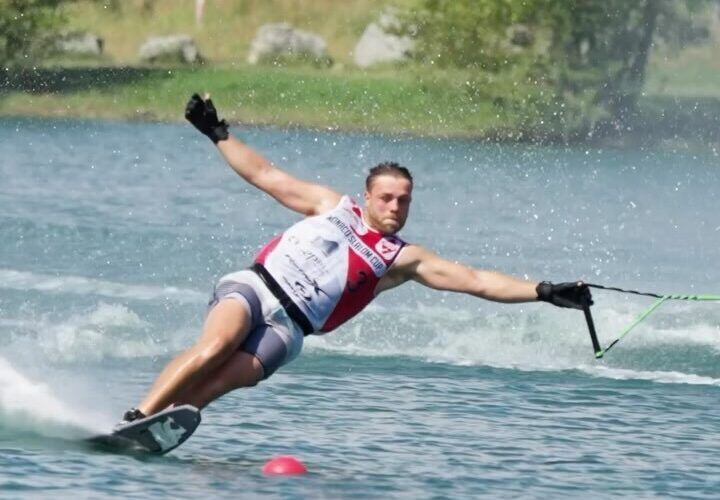As much as dedication, sacrifice, focus, hard work, success and failure are a part of professional sport, so are injuries. Athletes don’t reach greatness, or indeed a competitive level, without putting themselves close to the edge. And when that edge is crossed, athlete’s bodies are on the line.
Dane Mechler knows this well. A freak finger injury in 2021 took him out for most of the summer and, after a crash at a tournament in May, the same was the case this year. Across the seven tournaments since his serious ankle strain, there have been more different winners in men’s slalom than in the preceding 5 years combined. This included three first time winners. For a man widely considered to be the best current skier never to win a tournament, consistently held off the top by the dominant quartet of Asher, Degasperi, Smith and Winter, this would have hurt. This weekend at the MasterCraft Pro, Mechler exorcized these demons spectacularly on his return, as he took a dominant debut win.
That Mechler was given the stage to do so was surprising enough. Hurricane Helene had spent the week leading up to the event threatening Florida and then tearing up its north. Despite the start of the event being delayed from Friday to Saturday to accommodate, a rain affected opening day contained enough delays to the point that traditional format could not be followed. Extremely unusually, every slalom skier was allowed into each final because of the uncertainty of a second qualifying round when they skied the first. 21 men and 12 women lined up on Sunday morning to take the title.
On a day of substantially better weather, Mechler was out with a handful of skiers still to go, having skied to a level he was not satisfied with in the previous day’s seeding round. As he approached the course at 10.25m/ 41ft off the lead was 2.5 buoys. He attacked from the start, getting all the way to 5 where he fell, equalling his best ever score in a pro tournament. As skier after skier failed to beat him, the broadcast caught his nervous demeanor, as he no doubt internally prayed he had done enough. The last two skiers were two he had so frequently been denied victory by in recent years. Nate Smith got close but not close enough with 3.5 buoys at 10.25m. Will Asher, with the most victories in 2024, made an unusual mistake as he fell at 1. In doing so he handed Mechler a first, and very well deserved, win. The emotion was evident as Dane talked about what it had taken to get there. When his career is over, this will likely be amongst the very sweetest of a number of wins.
With wins spread so evenly across the field in 2024, Asher’s top 2 placements at all but two events this year have him in a commanding lead with 291. However the chasing pack are extremely tight, with positions juggled after this event. 2nd to 8th are separated by 50 points. All to play for with three events left.
In women’s slalom Regina Jaquess took her fourth win at the MasterCraft Pro in its five years. After a first round in which the top three seeds ran 10.75m/ 39.5ft off, she was the only one to clear it in the final. Jaimee Bull, frustrated after a terrible buoy 4 killed a great start, finished 2nd. 3rd was the resurgent Manon Costard, taking her third podium in her last four events. Jaquess, currently 4th on the Waterski Pro Tour Leaderboard after missing every event outside of the USA, has a lot of work to do to make up the deficit to Jaimee Bull in 1st. However with three events left, and a win % higher than any in the field, you wouldn’t bet against her.
As is typical of this neck-and-neck year of the Tour in men’s jump, victory came down to the last flight of the day. Joel Poland, with two wins on the Tour this year, lead with 69.8m/ 229 feet but with Freddy Krueger, undeniably the greatest jumper of all time, on the water, Poland wasn’t counting his prize money. On his final attempt Krueger, at 49 years old, beat the man close to half his age with a 70.7m/ 232ft final jump to take his own second victory of the year. With one event left, 6 points separate Poland and Krueger at the top of the John K Philips Tour Leaderboard. Can Poland maintain the lead that would end Krueger’s four year reign as champion? It all comes down to the King of Darkness.
Women’s jump saw Hanna Straltsova take a fairly typical win from Sasha Danisheuskaya and Brittany Wharton. The latter is also returning from injury this year and has made every podium. Straltsova managed her 2nd best ever jump with 57.6m/ 189 feet. She is looking for more at the next event.
The MasterCraft Pro marked the beginning of a crescendo towards the end of the season. Three events remain between now and early November. The first of these starts this Friday with the Travers Grand Prix, so often the event with the year’s best scores. Jump fans can look forward to the King of Darkness in under four weeks time. Stay tuned.
For event highlights, scores, replays and more visit Waterski Pro Tour.
